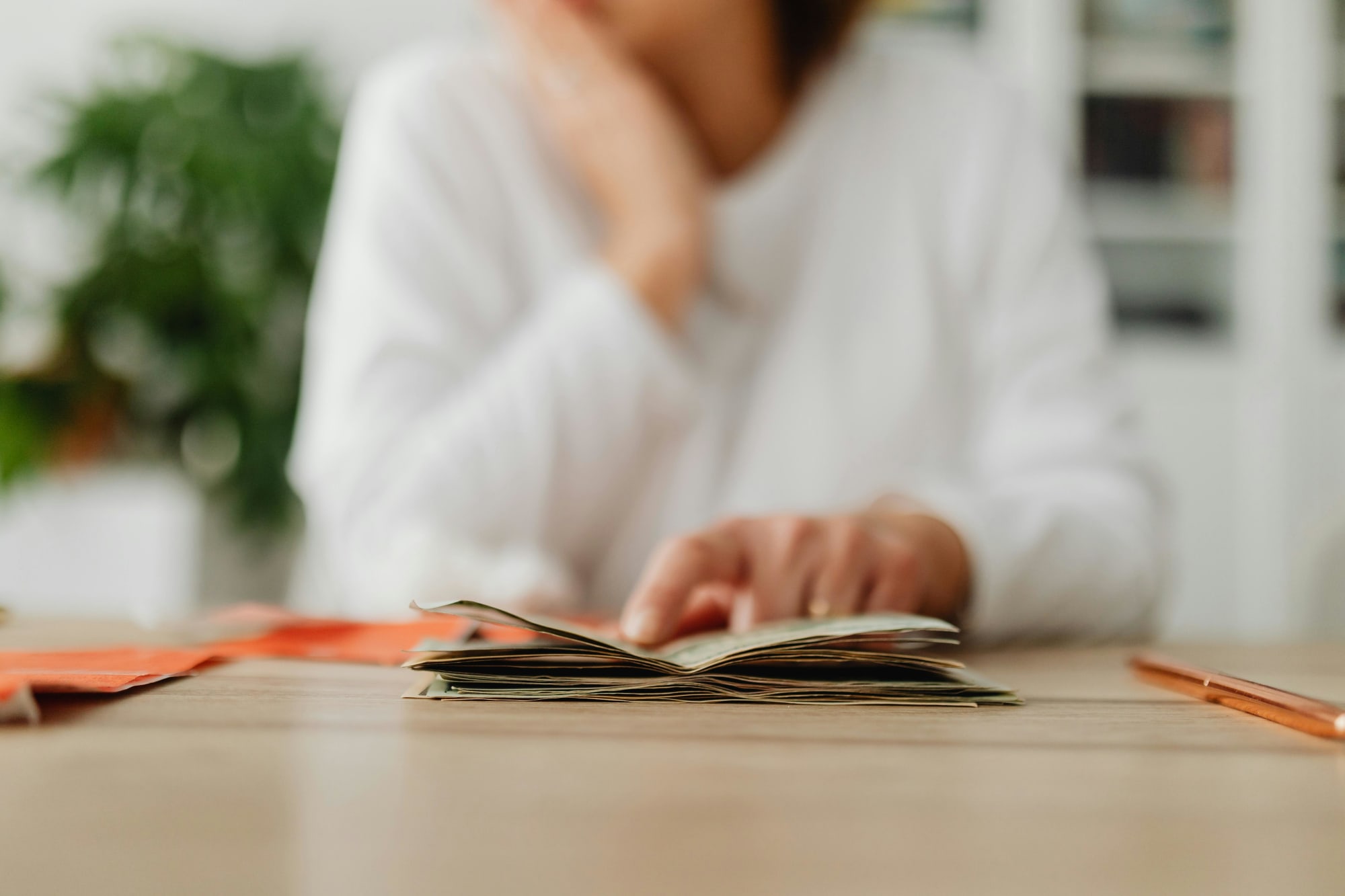Invest
Resurgent fuel prices drive CPI to 3.8% annual rise
Australia may still be dealing with the pandemic, but the ABS says that the consumer price index is returning to normal.
Resurgent fuel prices drive CPI to 3.8% annual rise
Australia may still be dealing with the pandemic, but the ABS says that the consumer price index is returning to normal.

According to figures from the Australian Bureau of Statistics, Australia’s consumer price index (CPI) rose 0.8 per cent in the June 2021 quarter.
This brings the annual growth of the measure, which is commonly used to gauge inflation in the economy, to approximately 3.8 per cent.
The CPI measures the rate of inflation in the economy by tracking the shift in cost for a metaphorical basket of goods and services, covering stuff like essential food to housing and medical costs.
According to the ABS, the CPI is “the most comprehensive measure of goods and services price inflation faced by all consumer households”.

In their latest report on Australia’s CPI, the ABS noted that the most significant factor behind the measurement’s most recent movements has been a rise in the cost of automotive fuel.
Michelle Marquardt, head of price statistics at the ABS, said that rising fuel prices “accounted for much of the increase in the June quarter CPI, with prices surpassing pre-pandemic levels”.
Other trends in consumer prices observed in the June 2021 quarter included a rise in private health insurance premiums, which drove the medical and hospital spending higher by 2.4 per cent.
Meanwhile, aggregate electricity prices also jumped upwards 3.3 per cent during this period. The ABS pointed to the unwinding of Western Australia’s $600 electricity credit as a likely culprit.
The ABS also observed a 0.1 per cent fall in the price of new dwellings, attributing the movement to the lingering effects of schemes like the federal government’s HomeBuilder grant and the like.
Finally, the ABS also noted price rises across a range of food items, including vegetables (5.5 per cent), fruit (4.7 per cent) and beef (3.6 per cent). They cited a number of incidents affecting local supply chains as the driving force behind these trends, such as the recent NSW floods.
More broadly, Ms Marquardt maintained and reiterated that “the annual CPI movement was significantly influenced by COVID-19 related price changes from this time last year”.
“Additional context can be gained by comparing the current CPI to pre-pandemic levels in the March 2020 quarter,” she said.
In the six years prior to the pandemic, Australia never moved more than a per cent per quarter.
However, Australia’s CPI recorded the largest quarterly fall in 72 years in June 2020. During this period, it shrank 1.9 per cent.
Harley Dale, chief economist at CreditorWatch, said the Reserve Bank is likely to “look straight through this latest inflation update”.
“This time last year, Australia was in a recession, and in the June quarter we experienced deflation of -1.9 per cent. From this exceptionally low base, we have naturally seen a big rise for this June quarter,” he said.
AI group executive Innes Willox agreed, noting that “while the 3.8 per cent increase in the CPI for the year to the end of June 2021 appears high, it is to a large extent due to the reversal of some deflationary forces of a year ago”.
AMP’s Shane Oliver said that “once base effects and various pandemic distortions are removed, underlying inflation has edged up from the lows around mid-last year but still remains subdued”.
About the author

About the author


Economy
Navigating the inflation maze: How CFOs can outsmart economic hurdles in Australia
Fresh inflation data have cooled expectations of near-term rate cuts in Australia, intensifying pressure on margins, capital allocation and demand. Rather than wait for monetary relief that may not ...Read more

Economy
Inflation concerns rise as Australia's CPI climbs to 3.8% in October
Australia's latest Consumer Price Index (CPI) figures have sent ripples through the economy, with headline inflation accelerating to 3.8% year-on-year in October, up from 3.6% in September. The data, ...Read more

Economy
October CPI results pose challenges for RBA’s monetary policy stance
In a surprising turn of events, the October Consumer Price Index (CPI) data has raised eyebrows among economists and market strategists, revealing stronger-than-expected inflationary pressures in ...Read more

Economy
Global deal activity declines by 6% amid economic uncertainty, reports GlobalData
In a year characterised by economic turbulence and evolving market conditions, global deal activity has witnessed a notable downturn during the first ten months of 2025. According to GlobalData, a ...Read more

Economy
Australia’s softening labour market puts another RBA cut in play — here’s what business should do now
A four-year high in unemployment has revived expectations the Reserve Bank could deliver another rate cut as soon as November. With quarterly GDP growth running at 0.6 per cent and annual growth at ...Read more

Economy
Rising CPI reinforces RBA’s stance as rate cut expectations remain: State Street
State Street Global Advisors says the Reserve Bank of Australia (RBA) is likely to hold its current policy outlook following the release of September quarter inflation data, which showed an unexpected ...Read more

Economy
NSW SES boosts tsunami preparedness ahead of World Tsunami Awareness Day
As World Tsunami Awareness Day approaches on 5 November, the New South Wales State Emergency Service (NSW SES) is ramping up efforts to enhance tsunami preparedness along the east coastRead more

Economy
Lifesaving Regional Response Strengthened with New NSW SES Vehicles
In a significant boost to regional emergency services, the NSW State Emergency Service (SES) has unveiled 11 new Community First Response (CFR) vehicles, designed to enhance the speed and safety of ...Read more

Economy
Navigating the inflation maze: How CFOs can outsmart economic hurdles in Australia
Fresh inflation data have cooled expectations of near-term rate cuts in Australia, intensifying pressure on margins, capital allocation and demand. Rather than wait for monetary relief that may not ...Read more

Economy
Inflation concerns rise as Australia's CPI climbs to 3.8% in October
Australia's latest Consumer Price Index (CPI) figures have sent ripples through the economy, with headline inflation accelerating to 3.8% year-on-year in October, up from 3.6% in September. The data, ...Read more

Economy
October CPI results pose challenges for RBA’s monetary policy stance
In a surprising turn of events, the October Consumer Price Index (CPI) data has raised eyebrows among economists and market strategists, revealing stronger-than-expected inflationary pressures in ...Read more

Economy
Global deal activity declines by 6% amid economic uncertainty, reports GlobalData
In a year characterised by economic turbulence and evolving market conditions, global deal activity has witnessed a notable downturn during the first ten months of 2025. According to GlobalData, a ...Read more

Economy
Australia’s softening labour market puts another RBA cut in play — here’s what business should do now
A four-year high in unemployment has revived expectations the Reserve Bank could deliver another rate cut as soon as November. With quarterly GDP growth running at 0.6 per cent and annual growth at ...Read more

Economy
Rising CPI reinforces RBA’s stance as rate cut expectations remain: State Street
State Street Global Advisors says the Reserve Bank of Australia (RBA) is likely to hold its current policy outlook following the release of September quarter inflation data, which showed an unexpected ...Read more

Economy
NSW SES boosts tsunami preparedness ahead of World Tsunami Awareness Day
As World Tsunami Awareness Day approaches on 5 November, the New South Wales State Emergency Service (NSW SES) is ramping up efforts to enhance tsunami preparedness along the east coastRead more

Economy
Lifesaving Regional Response Strengthened with New NSW SES Vehicles
In a significant boost to regional emergency services, the NSW State Emergency Service (SES) has unveiled 11 new Community First Response (CFR) vehicles, designed to enhance the speed and safety of ...Read more








